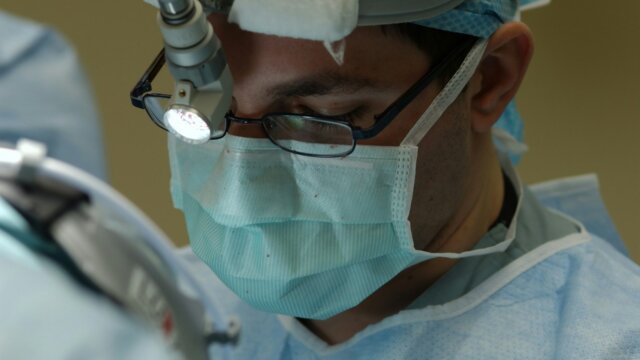FTC disclaimer: This post may contains affiliate links and we will be compensated if you click on a link and make a purchase.
Glaucoma, a leading cause of blindness globally, often goes unnoticed until it’s too late. Estimates suggest that nearly half of those affected are unaware of their condition (source).
The most crucial modifiable risk factor in glaucoma is intraocular pressure, and various strategies can help manage it, including medical, laser, or surgical treatments.
Understanding these treatment options, their costs, and success rates is critical for those affected. This article aims to serve as a comprehensive guide to the costs, types, and success rates of glaucoma surgery.
We will delve into the intricacies of various procedures, comparing their cost-effectiveness and weighing out their benefits and potential risks. Stay with us as we navigate the complex yet fascinating world of glaucoma treatments.
What is Glaucoma?
Glaucoma is a serious eye condition often characterized by an increase in intraocular pressure within the eye. It’s one of the leading causes of irreversible vision loss and blindness worldwide. This pressure can damage the optic nerve, which plays a critical role in transmitting visual information from the eye to the brain.
There are several causes and risk factors for glaucoma. While it is commonly associated with high eye pressure, other factors such as genetics, age, and other eye diseases can also contribute to its development.
Regular eye exams are crucial for early detection, as symptoms may not appear until the disease has progressed.
It’s essential to understand this condition, as timely and appropriate glaucoma treatment can help manage the disease and prevent further vision loss.
Treatment Options for Glaucoma
When it comes to treating glaucoma, there are a variety of options to consider. The primary aim of any glaucoma treatment is to decrease high intraocular pressure and prevent irreversible vision loss.
The first line of defense often involves non-surgical methods like taking glaucoma medication or using prescription eye drops.
However, if these methods prove ineffective or the disease continues to progress, glaucoma surgery may be necessary.
Eye surgery can be highly beneficial in managing glaucoma, as it targets the root cause of the issue, which is the blocked eye drainage system.
- Medication: There are several types of prescription eye drops and oral medications available that can reduce your eye pressure.
- Laser treatment: Procedures such as selective laser trabeculoplasty (SLT) can increase eye drainage and decrease eye pressure.
- Incisional surgery: When medications and laser procedures aren’t enough, doctors may recommend traditional surgery to create a new drainage path for fluid to leave the eye.
It is crucial to maintain regular eye exams and discussions with your eye doctor to determine the most effective treatment plan for your unique case.
Types of Glaucoma Surgery
Glaucoma is a serious eye condition that can lead to blindness if not properly managed. Various surgical treatments are available, each with its own procedure and effectiveness.
Trabeculectomy
This invasive procedure involves the surgeon creating a new channel to drain the fluid and ease eye pressure.
It can be more effective if it is complemented with the use of a steel surgical tube, known as the EX-PRESS® Mini-Shunt, which maintains a steady flow of aqueous humour under the eye’s scleral flap, yielding a more favourable postoperative course than a standard Trabeculectomy. (source)
Shunt Implants
When Trabeculectomy doesn’t yield the desired results, a common alternative is the Ahmed Glaucoma Valve.
This technique involves implanting a small tube inside the eye to facilitate fluid drainage, particularly useful when complications arise from previous eye surgeries.
Laser Procedures
Non-invasive laser procedures, like Contact TRANSCLERAL Laser Cycloablation (CTLC), are typically the last resort when other treatments fail. This technique directs a laser beam to the ciliary body, releasing fluid buildup in the eye.
Understanding Glaucoma Surgery Costs
Unraveling the intricacies of glaucoma surgery costs may feel like navigating a maze. However, clarity emerges when you consider key factors like the type of surgery, insurance coverage, and location.
The cost doesn’t end at the procedure itself. Total treatment expenses may include medicated eye drops, outpatient care, and potential complications. It’s essential to have an open dialogue with your eye surgeon and insurance provider about these potential costs.
Moreover, the balance of cost can tilt based on medical insurance policies that may cover a significant portion of the expenses. It’s also worth noting that financing options are available to help manage the costs.
Remember, investing in your vision today could save you from higher expenditure and compromised sight tomorrow.
Success Rates of Glaucoma Surgery
While the thought of surgery can be daunting, it’s essential to understand the success rates associated with different glaucoma surgeries.
The overall success rate is quite high, with many patients experiencing a significant reduction in intraocular pressure and slowed progression of the disease.
Trabeculectomy has a success rate of around 70-90%, depending on the severity of the glaucoma and the health of the patient. On the other hand, shunt implants have shown a success rate of nearly 80%.
In the case of laser procedures, like Selective Laser Trabeculoplasty (SLT surgery), the success rates often exceed 80%.
However, individual results may vary based on factors such as age, the type of glaucoma, and compliance with postoperative care.
It’s worth noting that success doesn’t always mean a cure. For many people, ‘success’ is slowing the disease’s progression, prolonging vision, and enhancing quality of life.
Please consult with your eye surgeon for precise success rates and possible risks associated with your specific case of glaucoma.
What to Expect During and After Glaucoma Surgery
When preparing for glaucoma surgery, it’s important to know that the procedure may be performed under local or general anesthetic. The surgery typically takes between 45 minutes to an hour. Some patients may experience mild discomfort, similar to post-surgery sensations. (source)
Potential Risks and Complications
While glaucoma surgery has become safer with each new advance, complications can still occur. These can include eye redness, corneal irritation, continued high eye pressure, infection, and in rare instances, varying levels of vision loss.
Recovery and Follow-Up Care
Recovery from glaucoma surgery varies. Most patients notice recovery in vision within days to weeks. Post-surgery, it’s crucial to avoid heavy lifting, bending over, and vigorous activity. Regular follow-ups with your doctor are also necessary to ensure proper healing. (source)
Conclusion
In summary, glaucoma is a range of diseases caused by high fluid pressure in the eye and can lead to vision loss if not managed effectively.
There are various types of glaucoma treatments, including medication and lifestyle changes, before surgery is considered.
Glaucoma surgery, while rarely the first treatment choice, is an essential option for moderate to severe forms of the condition. The cost of surgery varies, with health insurance often covering a significant portion due to the medical nature of the treatment.
It is crucial to remember that each patient’s situation is unique and the best approach to managing glaucoma will vary. Discussing your options with your eye doctor and insurance provider is an important step in managing this condition.
Despite the potential risks, the success rate of glaucoma surgery is high, and the benefits often outweigh the risks. The goal of glaucoma treatment, whether through medication or surgery, is to preserve as much vision as possible for as long as possible.
Remember, managing glaucoma is a team effort. It involves you, your eye doctor, and your insurance provider. Being proactive in your treatment can make a significant difference in preserving your vision.










